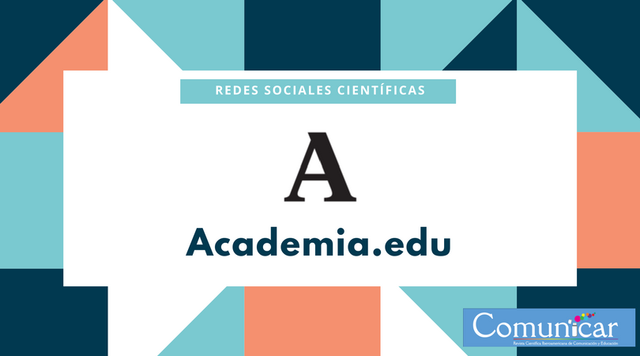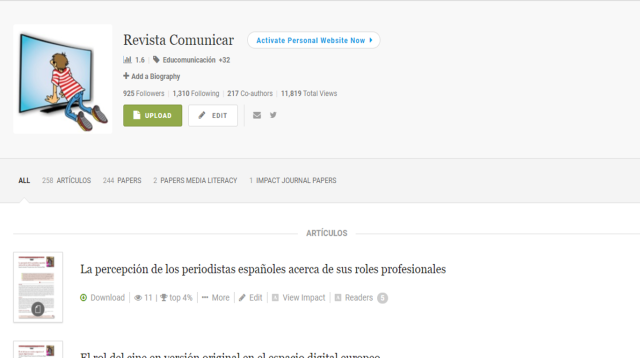Author: Luis-Miguel Romero – Translation: Erika-Lucia Gonzalez-Carrion
See Scientific Social networks part 1: Research Gate

Academia.edu is a social network that begins on September 2008 as an space for the researchers to share their works and in that way maximize their visibility at the same time making it possible the access to statistics of downloads and readings with graphics and maps that allow to know deeply the interests and impacts that have generated the published scientific works.
For the beginnings of 2017 this social network got together 36 millions of registered users, despite of the fact that the number of published texts do not get to 10 millions yet. Without doubt, this converts to Academia.edu in the scientific social network with higher traffic- finding it in the position 654 in the ranking Alexa-, although it could also be inferred for the difference of members- product that not all the users are “active”, that many of this counts belong to students or casual readers or that many users do not publish their works in the platform.
Although this web has not been free of critics, moreover when on December 2016 decided to offer a premium service for the researchers interested on acceding to best metrics as the readers’ report with full identification, the mentions in others spaces not scientific (means of communication, blogs, social networks, etc.) and the impact reports to 12 months; the free version continues having practically the same benefits than before, for the reason that it maintains its space as a powerful tool of visibility and diffusion of scientific production, at the same time a good interface to keep us updated of the news from our contacts.
Between ResearchGate and Academia.edu, which to choose?
Despite of the fact that it is not the matter to choose between one and other academic social network because all of them sump up visibility- as it was explained on this post– we have to understand than among them there exist important differences:
- Impact: Academia.edu reports for 2017 36 millions of registered users while ResearchGate has 6 millions, a number six times smaller. However, in Academia.edu the number of documents posted does not ascend to 10 millions, while in ResearchGate it reaches 70 millions. This lets almost clear that the profile of the users of ResearchGate is more strategic for the effective impact (cites), despite of the fact that in Academia.edu we consign more readings.
- Scores: ResearchGate was a pioneer in evaluating the impact of authors. Its metric- the RG Score- takes into consideration the impact of the publications in which the author writes, the interaction kept in the interactive spaces of question-answer and the RG Score of the followers. In the case of Academia.Edu, the authors’ rank is exclusive of those who have had recommendations of readings for other authors of relevance, although it is not neither clear nor explained how is it made this calculus.
- Metrics: Even though both social scientific networks offer metrics in real time about the visibility of the published documents, the interface of ReseacrhGate is greater extended and allows to identify to the last researchers who have read the work, issue that in Academia.Edu only have premium users. Likewise ResearchGate also identifies to the cites generated from the publications, application that does not have Academia.Edu
Comunicar Journal in Academia.edu
Unlike ResearchGate, Academia.edu allows to the scientific publications to self-manage their profiles. Currently, Comunicar Journal has 258 articles published in both idiomatic versions (Spanish and English) and reaches almost to 1.000 followers, 217 registered authors and almost 12.000 visits in two years.

